How to stop potato blight
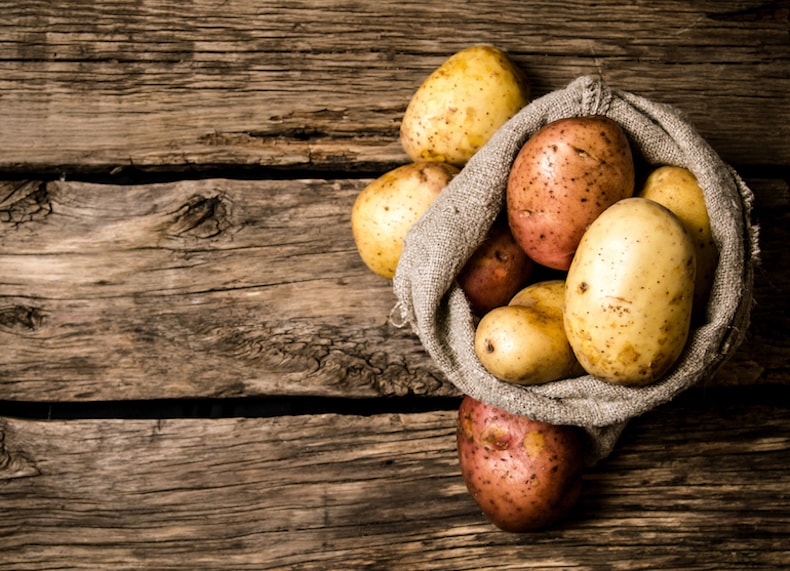
Keep your potato stock healthy and blight-free this season.
Image: Shutterstock
To prevent blight, plant your potatoes in a breezy spot with plenty of space between plants, and treat with fungicide before blight appears. It’s also important to rotate crops regularly to prevent build up of the disease in the soil, and to remove and destroy infected plants and tubers as soon as blight develops.
What is potato blight?
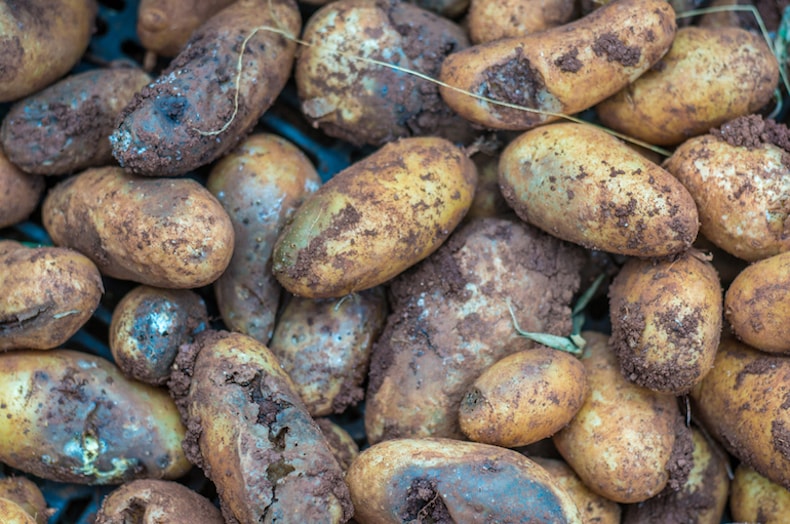
Potato blight is caused by spores Phytophthora infestan which is spread on the wind.
Image: Shutterstock
The plant disease that led to the Irish potato famine, late blight, is a widespread disease of the Solanaceae family. Often called potato blight or tomato blight because it particularly affects these crops, it can destroy your entire haul of potatoes in as little as ten days.
Blight is a fungal disease caused by spores of Phytophthora infestans which are spread on the wind and which can also contaminate potato tubers in the soil. Here’s what you need to know about blight and what you can do to stop it.
When does blight strike?
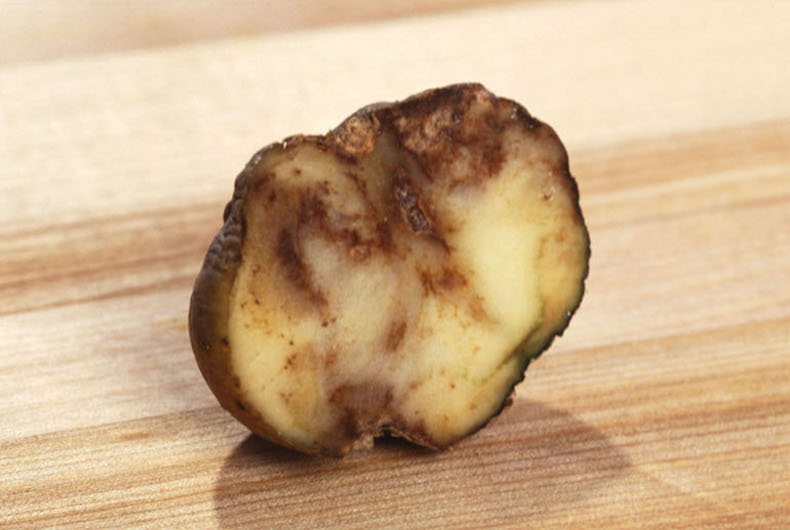
Blight can strike as early as June in the southern counties of the UK.
Image: Wikimedia Commons
Warm, humid weather, especially during the late summer is a perfect breeding ground for blight. In southern counties of the UK, potato blight can strike as early as June, and though it’s most damaging to outdoor crops, it can affect greenhouse produce too.
What does potato blight look like?
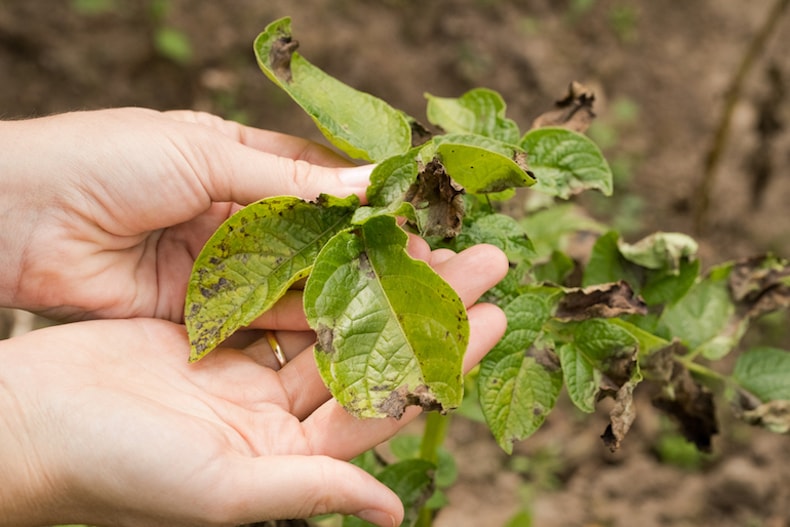
Blight turns the leaves brown and fungal spores develop.
Image: Shutterstock
Dark brown blotches appear around leaf tips and edges, spreading towards the middle, shrivelling and rotting the leaf. At the same time, white fungal spores develop on the undersides of the leaves, around the lesions, and further brown lesions develop on the stems. The leaves and stems rapidly blacken and rot, and the plant collapses.
Spores are released on the wind and quickly spread to infect neighbouring plants. They're also washed into the soil where they can infect potato tubers causing a red-brown rot directly beneath the skin which slowly spreads towards the centre of the tuber.
How does late blight spread?
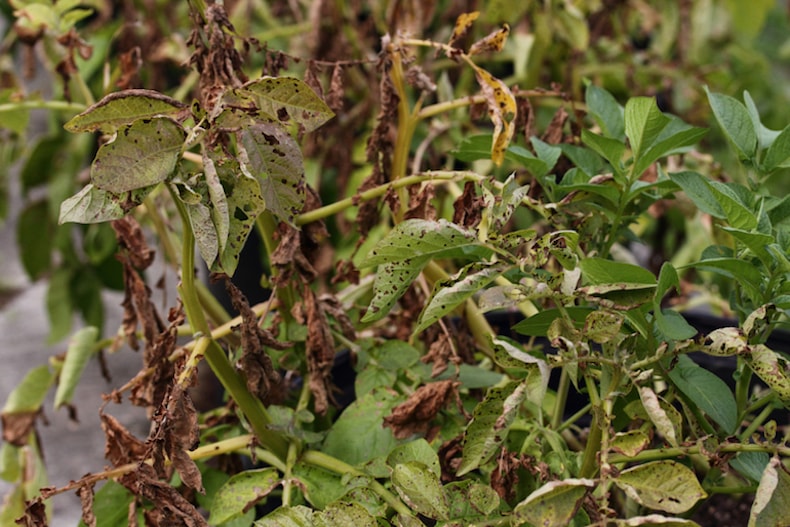
Late blight spreads really easily between crops
Image: Shutterstock
Heavy rain washes the fungal spores of late blight into the soil, where it overwinters. The disease also persists in infected potato tubers left in the ground or on the compost heap. Sometimes these tubers grow the following year to produce infected shoots which release fungal spores onto the wind to infect new crops.
Blight resistant potatoes
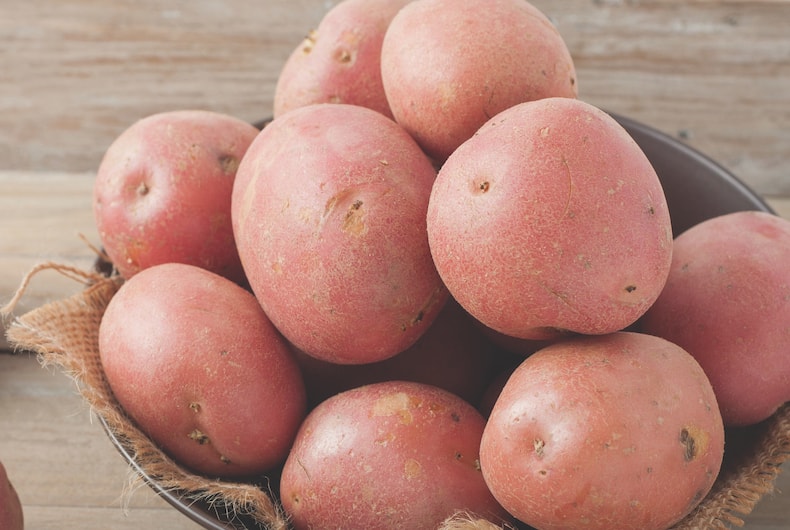
Potato 'Setanta' shows resistance to blight
Image: Thompson & Morgan
The best way to reduce the possibility of blight ruining your potato crop is to choose blight resistant potato varieties like the Hungarian Sarpo range, and others renowned for their superb resistance to late blight and viruses:
How stop potato blight - top tips
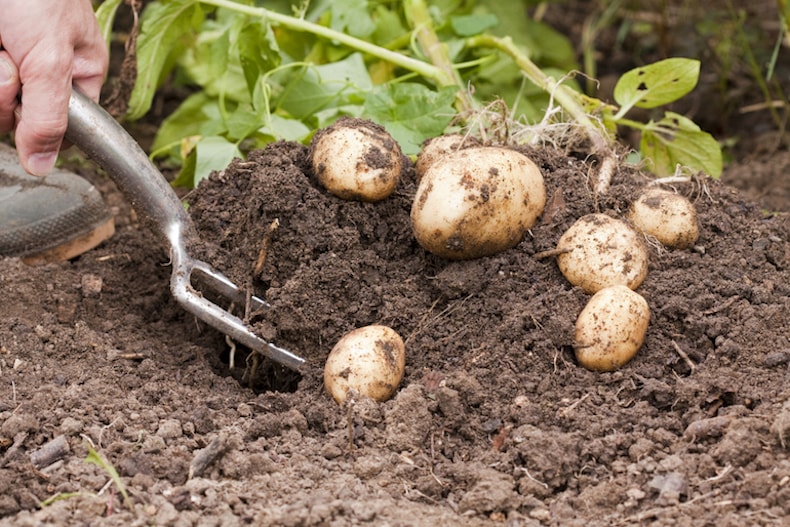
Careful harvesting and crop rotation reduces your chances of getting potato blight.
Image: Shutterstock
There’s little you can do to save an infected crop, so stopping blight is all about taking precautions to reduce the chances of the disease attacking your crop:
- Plant healthy, disease-free seed potatoes from a reputable supplier. Early crops, harvested before the worst of the blight season, have less chance of being exposed.
- Always choose an open planting site with good airflow and leave sufficient space between plants. Better airflow helps the foliage to dry quickly after rain, slowing the spread of blight between plants.
- In dry weather, water plants in the morning so that any moisture on the leaves can evaporate during the day. Water at the base of the plant only.
- Crop rotation helps prevent a build up of disease spores in the ground, and avoids infected plants growing from potato tubers that were missed during last year’s harvest.
- When they're ready for harvest, make sure you dig up every last potato so blight has nowhere to hide during the winter.
- Spray potato crops with a protective fungicide before signs of blight appear. Start from June, especially if the weather’s wet. Spray again after a few weeks to protect new growth.
What to do if blight strikes
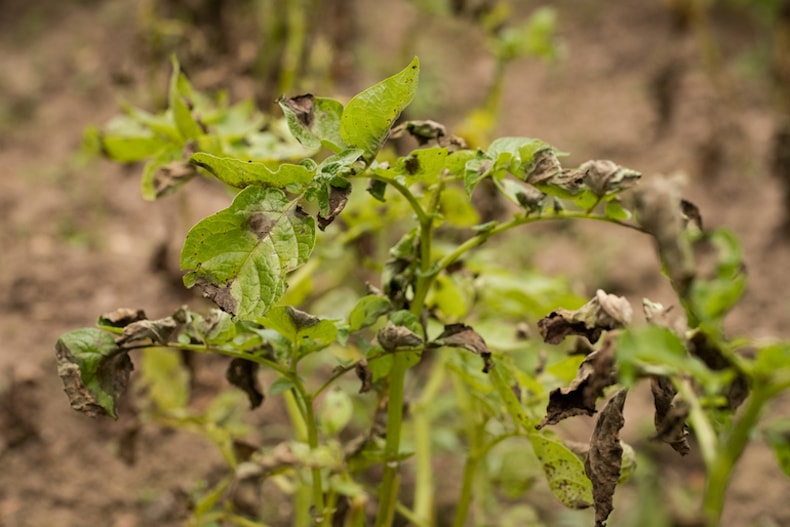
Quickly remove and destroy any plants that show signs of blight.
Image: Shutterstock
Should your potatoes show signs of blight, remove and destroy all affected plants. If your potatoes have already developed tubers, you might be able to save them by cutting away the foliage and stems. Leave the soil undisturbed for 2–3 weeks to kill off any lingering spores so that they don’t infect the crop when it is lifted.
Given that old potato tubers can harbour blight spores over winter, it’s important to destroy any unwanted or diseased tubers. Don’t put them on the compost heap. Also remove any plants that spring up the following season from old tubers that were left in the ground over winter.
For more information on growing this popular tuber, visit our hub page for a wealth of potato growing and care tips.
Sign Up For Exclusive Special Offers




© 2025 Thompson & Morgan. All rights reserved. A division of Branded Garden Products Limited.
Sign up for exclusive offers!



